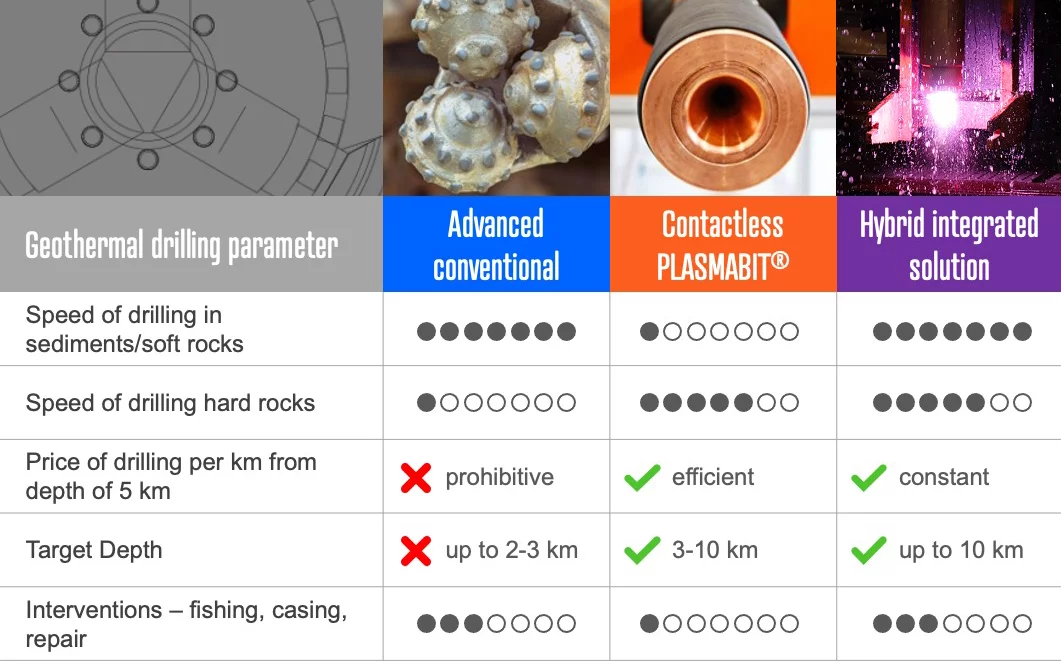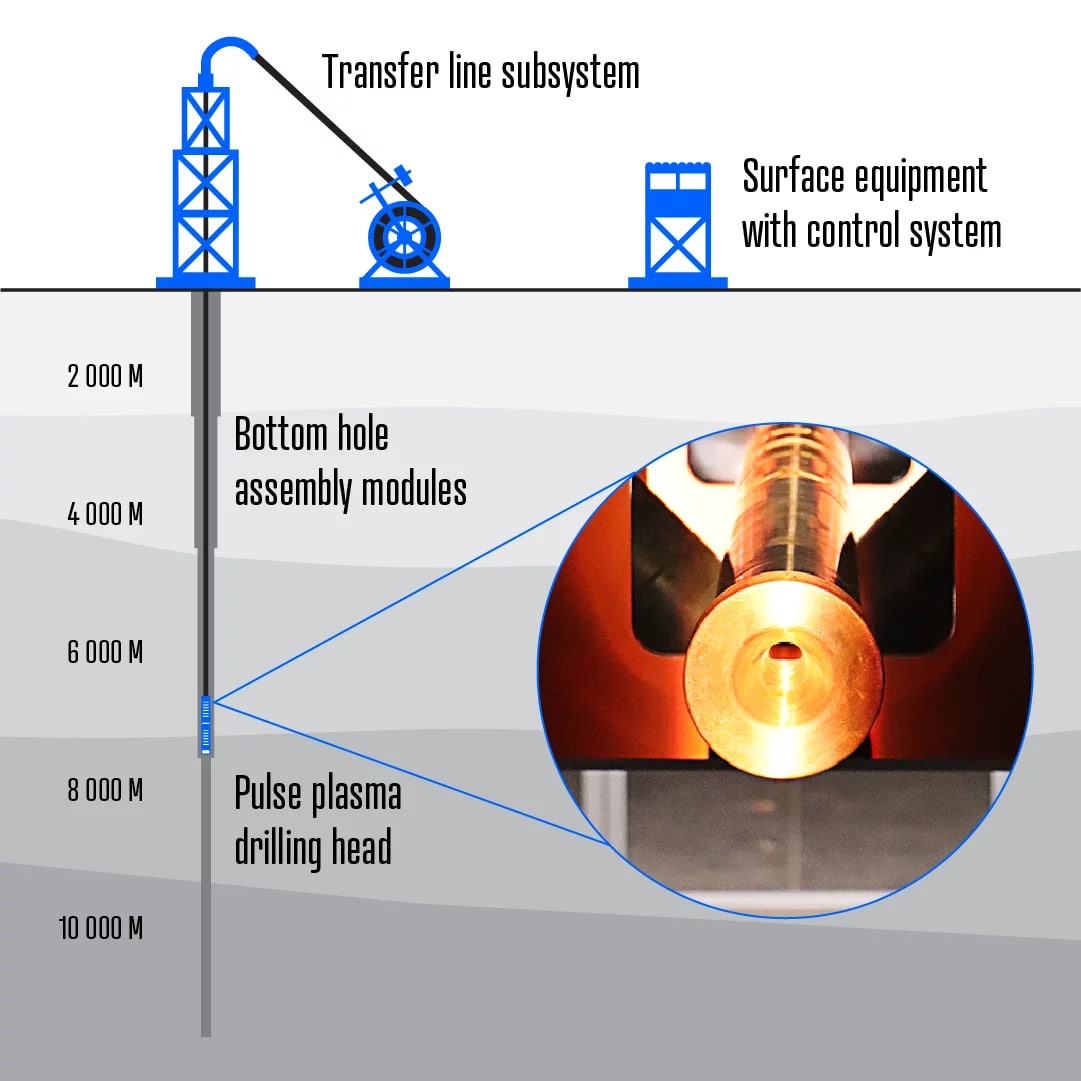
GA Drilling last week announced a partnership with the U.S. National Renewable Energy Laboratory (NREL) to commercialize a high-temperature downhole generator designed to enhance geothermal drilling applications. (Source: GA Drilling)
GA Drilling is on a mission to help make geothermal anywhere a reality, using its drilling technology that reaches deep underground where heat is harnessed to create electricity.
The company is moving toward commercialization of its Anchorbit downhole walking system and Plasmabit technology as next-generation geothermal emerges from the shadow of other renewables. Igor Kocis, CEO of GA Drilling, said geothermal has reached its inflection point and has great potential to quickly rise within the next five years.
In the past, the “geothermal energy industry was not able to show scalability going from megawatts into gigawatts in most of the places,” Kocis told Hart Energy. But that has changed as geothermal players have utilized oil and gas technologies to advance geothermal. “They showed significant progress and that if you are able to make bigger projects and drill more wells, you can decrease the cost by the learning curve. The maturity of these technologies is the base for the next scale up.”
Geothermal companies’ adaption of oil and gas technology and practices is making it possible to tap into hot rock to access steam or hot water for conversion into electricity in more places. The U.S. Department of Energy estimates that the next generation of geothermal projects could provide some 90 gigawatts in the U.S. by 2050. The U.S. has been a world leader in geothermal energy production but it accounts for less than 1% of U.S. electricity generation.
Nabors Industries-backed GA Drilling is among the companies aiming to address some of the biggest challenges in the industry: high costs and subsurface system risks.
“If you want to get enough energy in the geothermal power plant, you need to drill for higher temperatures, guaranteeing higher flows of the media that is bringing this temperature to the surface,” Kocis said. He added that although oil and gas reservoirs differ from geothermal ones—the former typically being sedimentary rock formations and the latter being igneous or metamorphic rock—they all have one goal in common. That is drilling into more area, including with fractures, he said.
“If you are able to significantly decrease the cost and increase the efficiency or length of the wells for a low price, then you are able to open the massive potential of new projects. And most important, you move these projects into the bankable category from some scientific category or heavily subsidized category,” Kocis said. “Our ambition at GA Drilling is to bring solutions to the market that will give them [energy companies] the tools … to make much more cost effective and much more ambitious projects.”
Forging partnerships
GA Drilling last week announced a partnership with the U.S. National Renewable Energy Laboratory (NREL) to commercialize a high-temperature downhole generator designed to enhance geothermal drilling applications.
The company plans to integrate its Plasmabit Hybrid drilling solution into a generator developed by NREL. Targeting hard crystalline rock, Plasmabit allows drillers to destroy rock and remove particles thousands of feet belowground quickly, which cuts costs.
NREL’s downhole generator is capable of producing electricity directly at the drillbit, eliminating the need for external power cables, reducing operational delays and enhancing drilling efficiency, according to a news release. It is designed to operate in temperatures up to 250 C. NREL and GA Drilling aim to progress the technology to full-scale field testing in commercial drilling systems.
“This NREL project is about a power generator that we can deploy downhole that will be able to generate more power for our tools and being able to use plasma or the, let’s say, high energy shocks to the rock to make it weaker,” Kocis explained.
The company also has been working with Petrobras, looking to reduce well construction costs by enabling deep and complex offshore wells to be drilled from a light well intervention vessel instead of a more expensive semisubmersible or drillship. The partnership is focused on GA Drilling’s Anchorbit downhole anchoring and drive system.
“Fundamentally, the project is about deep drilling,” he said.

Advancing technology
The Anchorbit downhole system aims to prevent vibrations and improve stability when drilling with rotary systems into hard and abrasive rock formations. This ideally increases the rate of penetration and expands the lifetime of the bit.
“In a nutshell, it is stabilizing the drilling process by improving the performance of the drilling or speed of drilling two times and extending life expectancy,” Kocis said.
The plug-and-play technology, which was publicly demonstrated at a Nabors facility in Houston about two years ago—is compatible with conventional rotary drilling and designed to work with the Plasmabit.
The technology could be deployed in more markets. Today, U.S. geothermal projects are mostly located in states such as California, Nevada and Utah due to their location near the earth’s tectonic plates. Kocis said GA Drilling hopes to expand to projects in Texas.
The company’s technology is focused on projects in environments where temperatures are up to 200 C and at depths between 5,000 ft and 10,000 ft belowground. The Plasmabit drilling platform is designed to go depths of 10-plus km (32,808 ft), he said, targeting supercritical resources.

“For us, it is important, first of all, to prove the concept that you can do a deeper project much more efficiently. And once this is proven in many initial projects, then it can expand globally.”
GA Drilling anticipates the technologies will be available commercially within four years, starting with Anchorbit this year or next year followed by the enhanced Anchorbit hybrid plasma. “And then two years after that, we will have a whole plasma solution for deep depths,” Kocis said.
He sees geothermal taking off in the coming years as GA Drilling progresses from years spent in the R&D phase toward entering commercial operation.
“We see it [geothermal drilling] as a key enabler element that will allow the whole geothermal industry to bring geothermal all around the world with our concept of geothermal anywhere,” Kocis said. “We can bring them much deeper to much higher energies. And our strategy for global development is to be a reliable partner” that delivers cost-effective deep drilling solutions for reservoirs that will deliver tens of gigawatts of geothermal power.
Recommended Reading
NatGas Shouldering Powergen Burden, but Midstream Lags, Execs Warn
2025-02-14 - Expand Energy COO Josh Viets said society wants the reliability of natural gas, but Liberty Energy CEO Ron Gusek said midstream projects need to catch up to meet demand during a discussion at NAPE.
Dallas Fed: Trump Can Cut Red Tape, but Raising Prices Trickier
2025-01-02 - U.S. oil and gas executives expect fewer regulatory headaches under Trump but some see oil prices sliding, according to the fourth-quarter Dallas Fed Energy Survey.
Bernstein Expects $5/Mcf Through 2026 in ‘Coming US Gas Super-Cycle’
2025-01-16 - Bernstein Research’s team expects U.S. gas demand will grow from some 120 Bcf/d currently to 150 Bcf/d into 2030 as new AI data centers and LNG export trains come online.
LNG Leads the Way of ‘Energy Pragmatism’ as Gas Demand Rises
2025-03-20 - Coastal natural gas storage is likely to become a high-valued asset, said analyst Amol Wayangankar at Hart Energy’s DUG Gas Conference.
What's Affecting Oil Prices This Week? (Jan. 27, 2025)
2025-01-27 - For the upcoming week, Stratas Advisors predict that the price of Brent crude will threaten $75.
Comments
Add new comment
This conversation is moderated according to Hart Energy community rules. Please read the rules before joining the discussion. If you’re experiencing any technical problems, please contact our customer care team.






